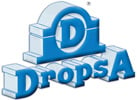The purpose of lubricationis to control friction and wear by the introduction of a friction-reducing film between moving surfaces in contact. Various substances can be used to lubricate, however, the most effective are Oil and Grease.
This is a general description of lubrication, which has many different aspects and variables, from the installation of a specificlubrication system, to the type of lubricantthat is being used.
What is a lubrication system?
An automatic lubrication system, also known as a Centralized lubrication system, is defined as the following: the controlled and precise amount of a particular lubricantthat is delivered to a specific point at an exact time using the correct method, while the machine remains operational.
The structure of a lubrication system is composed of a pumping element, lubricating tank, electrical control device, dividers, distributors, and distribution lines (pipes and fittings).
The main purpose of lubrication
An efficient lubrication system reduces:
- friction and wear of components
- energy and lubricant consumption
- the generation of heat
- the noise from friction
- corrosion damage and avoids the insertion of contaminants at the work site.
Furthermore, it ensures such advantages as a general increase in machine performance, improvement of working accuracy, an increase in a machines’ life, and the reduction of maintenance costs and downtimes.
The types of lubrication systems
Different types of lubrication systems have been designed and developed throughout the years, based on the specific requirement of machinery and the different industrial sectors.
These are the five main areas of lubrication systems solutions:
- Grease lubrication system: in this system, the greasing pumps provide a proper amount of grease to the lubrication points. The main systems used for grease lubrication are Dual Line and Progressive systems.
TheDual Line system has a modular design that allows for simple configuration and expansion of the system, and it is suitable for industry with large machines and many lubrication points: iron and steel industry, cement plants, platforms, large cranes, and cargo handling equipment.
A Progressive system distributes the flow of a grease pump into separate “progressive outlets” by the use of a progressive spool arrangement. The modular concept allows for the quick replacement of an element without interrupting the work cycle. It is suitable for small, medium, and large sized machines that require total control of plant operations (machine tools, wood working machines, presses, and textiles machines).
- Oil lubrication system: in total loss lubrication, oil or fluid grease create a thin oil film that protects parts. This is renewed at regular intervals by an automated lubrication system with an electric oil pump.
The main systems utilized in Oil lubrication are the Single line system and the 33V system.
The Single Line system is a simple and effective system that offers different solutions for a variety of application requirements. It is suitable for small machines operating in protected environments with a few lubrication points and space limitations: tools, woodworking machines, textiles machinery, and printing machines.
The 33V system, a precise system for dosing that requires a specific amount of oil directly to the lubrication points. It is suitable for small, medium sized machines such as, woodworking machines, textiles machines, and presses.
- MQL (minimum quantity lubrication) system & Near dry machining:an innovative new technology that replaced traditional and pure oil fluid systems in a machining environment. fundamentally, a controlled compressed air stream carries minimal quantities of cutting oil in a “aerosol” format to the cutting surface by External or Internal (through the tool lubrication).
Recently, DropsA has developed and patented the“MaXtreme”, a revolutionary MQL lubrication systemthat creates ultra-fine aerosol oil particles, generated by the innovativeVortex technology. It is suitable for the most demanding and high performance near-dry machining applications requiring external and internal minimal quantity lubrication.
- Air-Oil lubrication system: this system consists of a controlled air-oil stream utilized for both cooling and to carry small quantities of air-oil particles to the lubrication points. It is suitable for large machines in heavy industry and machine tools.
- Recirculating oil system: the purpose of oil recirculation is to supply lubrication and provide cooling to bearings and gears. An electric pump ensures that an appropriate lubricant pressure is available in the main line, where the oil flow is also measured and regulated.
By utilizing a return line, lubricant can travel back from the bearings to the pumping station, in which it is then filtered and cooled (through heat exchangers) before it can be injected again at the lubrication points.
This system is designed for specific applications, suitable forlarge machines with multiple points to lubricate paper mills, machine tools, and gear boxes.
Another lubrication system can be added to the previous which is typically used for Oil refineries. This is the Oil Mist System, an advanced technology for automating the production and distribution of a continuous flow of atomized Oil particles (Nebol).
These particles are delivered directly to the bearings and metal surface, for a high quality, cost-effective lubricationsolution.
How to choose a lubrication system?
To choose the right lubrication solution, the below referenced information is necessary to help determine the production needs of your machinery:
· Types of lubricant: oil or grease, and its features (technical sheet)
· Types of lubrication: total loss, air-oil, grease, recirculating oil
· Points to lubricate: number, position, type
· Distance: between the pump and various lubrication points
· Amount of lubricant: per single point or define the proportionality between the points.
· Type of supply: manual, electric, pneumatic
· Type of management: manual, automatic with or without electrical control panel
· Particular condition: temperature, ATEX etc…
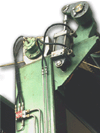 По сектору промышленности
По сектору промышленности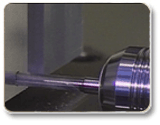 MQL: Обработка с минимальным количеством смазки
MQL: Обработка с минимальным количеством смазки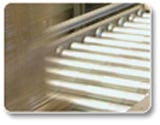 Другие специальные приложения
Другие специальные приложения Железнодорожные пути
Железнодорожные пути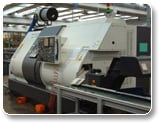 Транспорт - оборудование и инфраструктура
Транспорт - оборудование и инфраструктура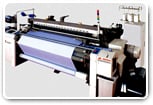 Текстиль
Текстиль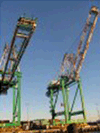 По типу смазки
По типу смазки
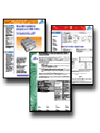 Каталог компонентов
Каталог компонентов Насосы
Насосы Распределители смазки
Распределители смазки Инжекторы и ограничители
Инжекторы и ограничители Коллекторы
Коллекторы Фитинги
Фитинги Жесткие и гибкие трубы и аксессуары
Жесткие и гибкие трубы и аксессуары Контроллеры
Контроллеры Система смазки минимальным количеством (MQL)
Система смазки минимальным количеством (MQL) Системы воздушно-масляной
Системы воздушно-масляной  Системы смазки масляным туманом
Системы смазки масляным туманом Специальные изделия
Специальные изделия Клапаны
Клапаны Распылители и форсунки
Распылители и форсунки Щетки
Щетки Фильтры
Фильтры Резервуары
Резервуары Комплектующие
Комплектующие Смазочные и расходные материалы
Смазочные и расходные материалы Датчики и контрольно-измерительные устройства
Датчики и контрольно-измерительные устройства


